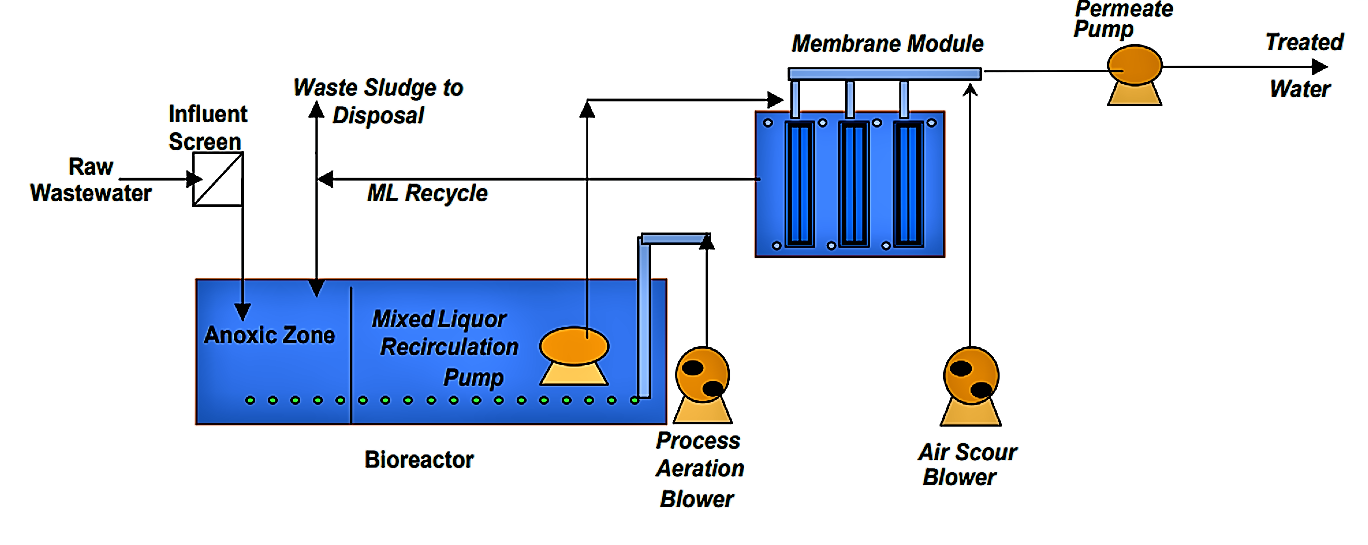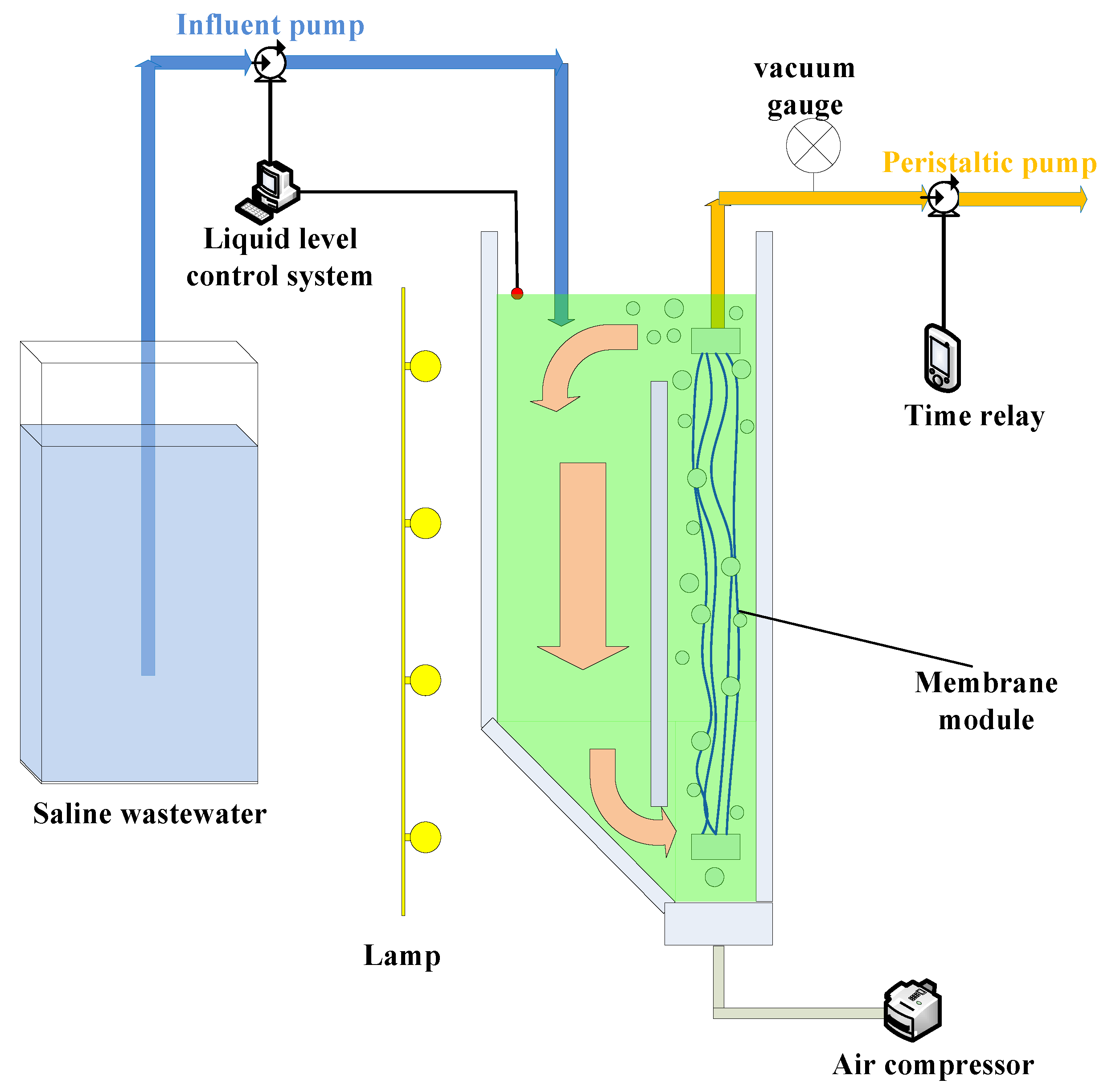Troubleshooting Common Issues with Membrane Bioreactor Systems
Troubleshooting Common Issues with Membrane Bioreactor Systems
Blog Article
Membrane Layer Bioreactors Discussed: Reliable Solutions for Clean Water
Membrane layer bioreactors (MBRs) have become an advanced remedy for addressing journalism difficulties of wastewater treatment. By incorporating organic procedures with innovative membrane layer filtration, MBRs not only enhance the quality of treated water but likewise decrease the spatial demands of treatment facilities. As environmental issues increase, the duty of MBR modern technology in advertising lasting water monitoring comes to be significantly substantial. The complexities of their procedure, benefits, and prospective applications merit a closer evaluation to fully understand their influence on the future of water therapy.

What Are Membrane Bioreactors?
Membrane layer bioreactors (MBRs) are innovative wastewater treatment systems that combine biological destruction procedures with membrane filtration modern technology. This combination permits the reliable removal of contaminants from water, making MBRs a recommended option in numerous applications, consisting of municipal wastewater therapy and industrial effluent monitoring.

One of the essential benefits of MBRs is their ability to create top quality effluent, usually appropriate for reuse in irrigation or industrial processes. Additionally, MBRs call for a smaller impact compared to traditional therapy systems, making them suitable for urban setups where space may be restricted.
Furthermore, MBRs can properly deal with differing influent loads and are less vulnerable to the impacts of toxic shocks. These attributes add to their growing appeal as a lasting solution for dealing with the raising need for clean water while lessening ecological impacts.
Exactly How Membrane Layer Bioreactors Job
While the operation of membrane bioreactors (MBRs) may appear facility, it fundamentally focuses on the synergy in between organic procedures and membrane filtration. MBRs integrate an organic therapy procedure, generally triggered sludge, with a membrane layer splitting up device to treat wastewater efficiently.
In an MBR system, wastewater is very first introduced into a bioreactor where bacteria break down natural issue and various other impurities. The organic task lowers the concentration of contaminants while advertising the growth of biomass. Following this biological therapy, the blended alcohol goes through membrane filtering, which can be microfiltration or ultrafiltration, depending upon the preferred effluent high quality.
The membranes serve as a physical barrier, allowing water and small solutes to pass while keeping suspended solids and larger particles. This makes it possible for the system to maintain a high focus of biomass within the activator, improving the therapy effectiveness.
Additionally, the constant separation of treated water from the biomass promotes a portable layout and lessens the footprint of the treatment center. Generally, the combination of biological destruction and membrane layer filtering in MBRs results in reliable and reliable wastewater treatment, ensuring high-quality effluent ideal for different applications.
Advantages of MBR Modern Technology
One of the key benefits of membrane bioreactor (MBR) technology is its capability to produce high-quality additional hints effluent with a significantly lowered footprint contrasted to traditional wastewater therapy techniques. MBR systems effectively incorporate biological therapy and membrane layer purification, causing premium removal of pollutants, consisting of suspended solids, microorganisms, and raw material. This ability causes effluent that often meets or surpasses stringent regulative standards for reuse and discharge.
Furthermore, MBR technology permits greater biomass concentrations, which improves the therapy effectiveness and reduces the called for activator quantity. This small layout is specifically useful in urban areas where area is limited. The functional adaptability of MBR systems also means they can adjust to varying influent top qualities and flow rates, making them appropriate for a large range of applications.
Additionally, the lowered sludge production connected with MBR procedures adds to decrease functional and upkeep costs. The membrane layers act as a physical barrier, lessening the risk of clogging and making it possible for longer operational durations in between cleaning. Generally, the advantages of MBR innovation make it an eye-catching remedy for lasting wastewater therapy, addressing both ecological problems and the demand More about the author for reliable resource administration.
Applications of Membrane Bioreactors
With their flexibility and performance, membrane layer bioreactors (MBRs) locate applications throughout numerous markets, consisting of community wastewater therapy, commercial processes, and also water reclamation. In local settings, MBRs supply a small option for dealing with wastewater, properly getting rid of impurities while concurrently producing high-grade effluent that fulfills stringent regulatory requirements. This makes them specifically suitable for locations with restricted room.
In industrial applications, MBR technology is utilized for treating process water, particularly in sectors such as food and beverage, pharmaceuticals, and petrochemicals. These industries profit from MBRs' capacity to take care of high natural lots and their efficiency in recouping valuable resources from wastewater, such as nutrients and water.
In addition, MBRs play a critical function in water improvement efforts, enabling the reuse of dealt with wastewater for watering, commercial processes, or also as safe and clean water after further treatment (Membrane Bioreactor). Their effectiveness in removing microorganisms and pollutants makes them a trustworthy selection for making sure water high quality in various reuse applications
Future of Water Therapy Solutions
The future of water therapy remedies is positioned for transformative improvements driven by technical advancement and boosting environmental understanding. As global water scarcity comes to be a pushing issue, new approaches, consisting of membrane layer bioreactor (MBR) systems, are established to play a critical role in boosting the performance and sustainability of water therapy procedures.
Emerging technologies such as expert system and artificial intelligence are expected to enhance treatment procedures, permitting real-time tracking and predictive upkeep. This will enhance the general dependability and efficiency of water therapy centers. Furthermore, innovations in membrane products, such as graphene and nanofiltration, assure to boost permeation prices and reduce fouling, causing reduced power usage and functional expenses.
Additionally, the combination of renewable power resources into water treatment plants will certainly add to greener practices. The circular economy design will likewise get grip, urging the recuperation of beneficial resources from wastewater, such as nutrients and power.
Conclusion

Membrane layer bioreactors (MBRs) have emerged as a sophisticated remedy for dealing with the pressing difficulties of wastewater therapy. By incorporating organic procedures with advanced membrane layer filtering, MBRs not only boost the high quality of cured water but likewise minimize the spatial requirements of treatment centers.One of the crucial advantages of membrane layer bioreactor (MBR) technology is its capability to create high-grade effluent with a dramatically reduced impact contrasted to traditional wastewater therapy approaches.With their versatility and effectiveness, membrane bioreactors (MBRs) locate applications throughout different fields, including local wastewater treatment, commercial processes, and even water recovery.In verdict, membrane bioreactors stand for a considerable improvement in wastewater therapy modern technology, incorporating organic processes with reliable membrane purification to create high-grade effluent.
Report this page